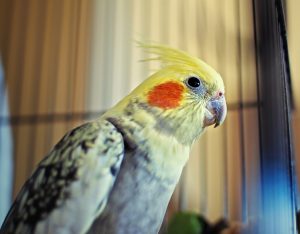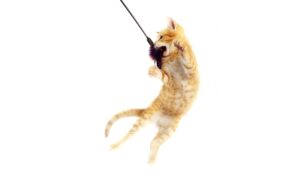Take Advantage of the Popularity of Pint-Sized Pets
Glenn Polyn //May 1, 2021//
They generally have the reputation of being the also-ran pets in terms of popularity after dogs and cats. That, of course, is a misconception. If you go by individual animals in the United States, fishes rank up there with dogs and cats, at more than 90 million. And what makes small pets – those hamsters, guinea pigs, parakeets, geckos and goldfish – so appealing? They’re relatively affordable when compared with the time and cost of keeping a dog or cat.
When it comes to the aquatic sector, small- and medium-sized tanks are seeing steady sales among dry goods, and are backed by quality brands like API, Aqueon, Marineland and Ultum Nature Systems, while GloFish species, including the most recent species of bettas in green and orange, continue to drive the livestock market, according to retailers and wholesale distributors.
How can retailers take advantage of the growing popularity of the aquatic sector? Over the past five years, Mars Fishcare has been studying fishkeepers to learn more about their motivations, preferences and shopping behaviors.
“We conducted our first research project in 2016, and we continue to invest in learning through today,” said Patricia Carr, the leadership and insights manager at Mars Fishcare. “Throughout our journey, we gained an understanding of how our shoppers decide where and how to shop online and in-store, depending on their specific needs. We learned how they prefer to navigate online and brick-and-mortar stores, and what type of information is most useful to help them make purchase decisions.”
According to Carr, 74 percent of fishkeepers enjoy their aquarium because their fish are relaxing and bring a sense of calm and tranquility to their home. It should come as no surprise that, over the 12-month period starting with the global pandemic caused by COVID-19, the aquatics category gained 318,000 new aquariums compared to the previous 12-month span, according to Mars Fishcare’s research.
“We also learned through research that 28 percent of the first-time fishkeepers leave the hobby within the first year, with 62 percent of them leaving after only six months,” Carr explained. “The window of time for retaining [these aspiring hobbyists] is short, and the opportunities for the retailer to provide customized help are scarce, when 77 percent of fishkeepers today begin by searching information online.”
So, with that in mind, what recommendations does Marsh Fishcare have for retailers in their effort to help retain these new fishkeepers as customers while also enabling them to enjoy the aquatic hobby? According to Carr, there are three steps that Mars Fishcare has developed, based on the company’s learnings from its research over the past five years.
One: Simplify the store shelf. Fishkeepers have noted that they are easily confused by the lack of clear organization on the aquatics shelf, and they stated that too many brands make the shelf redundant and even more frustrating.
“Research taught us that an aquatics product assortment including a complete range of product types or ‘solutions’ is twice as relevant for fishkeepers than a broad range of brands to choose from,” stated, Carr who added that the following methods prove effective with increasing sales of aquatic products.
- Optimize product assortment to offer a narrow range of brands within a broad range of solutions.
- Organize the aquatics store shelf with water care products grouped by product type or function, and with fish food organized by format (flakes, pellets, etc.).
- Implement shelf signage that clearly identifies each product group to help fishkeepers quickly narrow their choices on the shelf.
Two: Train staff to teach routine aquarium care in clear and simple terms to novice fishkeepers. Knowledgeable staff is the third most important factor for aquatic customers when selecting retailers to visit, according to the Mars Fishcare report, and 46 percent of aquatic shoppers will ask for help from an employee when in a brick-and-mortar store.
Three: Focus on a proactive approach when helping first-time fishkeepers solve common issues, such as water clarity and algae control. Those two issues alone were cited 25 percent more by fishkeepers who left the hobby than current aquatic hobbyists.
“Help [first-time fishkeepers] understand that these are common problems, and that they can be easily prevented and treated,” advised Carr. “Algae and water clarity problems are ‘visible’ issues, and they disturb the beauty and peace that the aspiring fishkeeper seeks when entering the hobby.”
 On the other hand, consumers who keep pet birds are seeking variety in the products that they want for their companion animals. Retailers must have a dedicated bird food section that offers a wide selection of food for everything from finches to parrots. Retailers should take note that many of today’s popular avian food offerings have a focus on textures, shapes, colors and aromas that will stimulate a bird’s senses.
On the other hand, consumers who keep pet birds are seeking variety in the products that they want for their companion animals. Retailers must have a dedicated bird food section that offers a wide selection of food for everything from finches to parrots. Retailers should take note that many of today’s popular avian food offerings have a focus on textures, shapes, colors and aromas that will stimulate a bird’s senses.
In addition to food, industry experts recommend retailers carry treats, cages, foraging toys, feeders and health supplements. Stocking inventory from A&E Bird Co., Greenfeather Bird Supply, Vitakraft, Kaytee and ZuPreem will cover all the bases that can turn a bird owner from a one-time visitor to a store’s dedicated customer.
Kaytee, makers of the popular Fiesta and Food From the Wild lines of bird food for such species as cockatiel, conure, parrot and parakeet, is one of the brands that develop its diets based on the recommendation of avian nutritionists who know that each bird species is unique, and each individual diet is scientifically formulated for top nutrition. The brand also makes a variety of toys, habitats and other accessories that enable consumers to develop a strong bond with their companion bird, thus enhancing the pet bird ownership experience.
California-based Volkman Seed Factory, which has been developing bird seed diets since 1863, is another reliable producer of bird food. With ingredients coming from all over the world to be blended together in fresh, appetizing and nutritious blends for companion and wild birds, Volkman has earned a reputation for delivering quality avian diets.
Among the best sellers that retailers regularly point to are Avian Organics, Nature’s Feast and Featherglow, which is the brand’s answer for those pet parents who are gravitating toward home-cooked meals for their companion birds. For example, Featherglow’s Birdie’s Buffet is a nutritional, healthy, home-cooked meal that is filled with sun-cured fruits, dried vegetables and a mixture of seeds. The bird owner just needs to place the desired amount of dry mix in water, cover and soak for about 15 minutes.
Brands like Kaytee and Volkman also manufacture products for small mammals. Kaytee has become a household name for its CritterTrail line of creative habitats, kits and accessories, including those with LED lights or colorful “fun-nels.” Meanwhile, Volkman serves the small mammal sector with its variety of breed-specific gourmet recipes and pellet diets, made even more attractive to consumers thanks to the company’s eye-catching packaging.
When it comes to essential products hamsters, guinea pigs, rabbits, mice and rats that retailers should keep in stock, food and treats top the list – and the more variety, the better. The dietary need of each species of small animal will vary greatly because these critters have unique food sources based on their origins in wild. Due to their geographic differences, the digestive systems of these critters have evolved. Therefore, each breed’s health will be benefit from a specific diet. However, while the dietary differences will vary between each species, the need for quality nutrition remains the same.
In addition to Kaytee and Volkman, Supreme Petfoods is another brand that ranks among the best-sellers of small mammal food and treats. A mainstay in the small mammal market, Supreme Petfoods had humble beginnings when it started as a simple farm in Suffolk, England, in 1991.
“The farmer started bagging up their hay and straw for local pet stores initially. But they soon started to understand that the foods available for small pets at that time offered poor quality nutrition and were upset to find that diets were not tailored to meet the specific needs of each pet species,” said Claire Hamblion, the company’s marketing manager in Pet Age’s October 2020 Back Story profile on Supreme Petfoods. “We’re now a company that provides food for small pets all around the world, but here at Supreme, our passion has never died. We believe that small pets deserve so much more and need the same quality of nutrition that is available for cats and dogs. We know that how our pets are fed makes a big difference to their health and well-being and take our role in that very seriously.”
The company’s Selective Naturals line of food has become a steady seller among consumers who keep rabbits and guinea pigs. Last year, the brand launched Science Selective House Rabbit as an extension to its award-winning Selective food range. The new product has a formulation to match the needs of rabbits living indoors with a high fiber mix of forages that more closely reflects natural grazing patterns of wild rabbits, offering both nutrition and a variety of tastes to enjoy. Containing Timothy hay, grass and the herb thyme, it is fortified with essential vitamins A and D.
A relative newcomer to the critter category is Nebraska-based Western Resources Group (WRG), a regional resource recovery and recycling nonprofit organization that is committed to balance resource management practices. The group also offers recycling education and collection services.
Comprised of a matrix of rural Nebraska communities that consolidate their recycling at a facility in the North Business Park of Ogalla, Nebraska, WRG source-separates and cost-shares the recyclable materials, which are used to create a variety of products.
Made from the clean cardboard and newsprint collected throughout the rural Nebraska community, WRG’s ECO-Shred Bedding provides absorbent, biodegradable animal bedding with minimal dust for use within enclosed spaces. It is more absorbent than traditional wood shavings or sawdust, which is especially beneficial during winter months. During production, dust is vacuumed out of the ECO-Shred Bedding, thereby making it virtually dust-free. This makes the bedding an excellent benefit for people or animals with respiratory issues.
Based on the 2020 Packaged Facts report, “Reptile Products: U.S. Pet Market Trends and Opportunities,” reptile products have been projected to grow from $495 million in 2019 to between $550 million and $650 million by 2024, depending on the depth and duration of coronavirus pandemic-triggered impacts on consumer finances and housing situations. These figures include food and non-food supplies for pet reptiles including snakes, lizards and turtles as well as amphibians.
“When pet care budgets are limited, reptiles may gain in appeal in being very affordable compared with keeping dogs or cats, with most reptile owners viewing their reptile setups as a reasonable initial expense,” noted the market research firm in a 2020 press release. “The reptile business may also get a bump because of the heightened levels of comfort and affection pet owners are finding in their pets due to being home bound and social distancing, and because kids are a key factor to the household ownership of reptiles, and children now more than ever need to be meaningfully entertained.”
While industry experts have been reporting increased demand for herps as pets throughout the pandemic, there was a supply shortage of live foods for these companion animals. However, live food sourcing has caught up with the increased demand, and availability of foods has nearly reached pre-pandemic levels.
People who keep reptiles and amphibians as companion animals spend plenty of time researching the type of animal that best fits their lifestyle, which is vital for a strong pet-owner bond. Like small mammals, herps have dietary needs that vary from species to species. Timberline is known for its proprietary Vita-Bugs and CalciWorms, and the company has a strong track record for being a reliable of live foods, even during the pandemic.
Although live foods have been dominating the reptile sector, prepackaged dietary offerings have a strong following among those who keep reptile companion animals. Among popular foods are isopods, Dubia roaches and crickets. However, variety is essential, as consumers with reptiles often provide their animals with a well-rounded diet.
Reptiles by Mack, which has been breeding reptiles since 1985, has its own line of frozen rodents called Mack’s Natural Reptile Food, with frozen mice and rats that are available in singles, boxed and bulk options.
With the increase in reptile and amphibian ownership, the demand for terrariums also increased over the past year. The tank or terrarium is ultimately the pet’s world, and the correct environment needs to include not only proper temperature and humidity, but also an appropriate habitat. Often, reptile owners enjoy offering their pet a habitat that replicates its natural environment.
Zilla, a brand of Central Garden & Pet, saw strong sales of its line of micro habitats that it introduced in 2020. These enclosures are appropriate for micro geckos, inverts and other small exotic pets.
With more than 20 years of experience in retail and educational programs, Jungle Bob Smith has become a driving force for reptiles and aquatics. He has translated that into his own retail store, Jungle Bob’s Reptile World, which has locations in Selden and Oakdale, New York.
He also has his own brand, which was born to offer reptile enthusiasts quality products and to combat the competition from online sellers and big box stores. His first branded product was the Desert Sun light bubl, which is a UVB/Heat combination that he says rivals anything else on the market. After amassing a catalog of more than 200 items, each of which is tested in his store before it hits the market, Jungle Bob considers his canned Dubia roaches as the most demanded product.
As a retailer, Jungle Bob has a simple piece of advice for those wanting to add reptile products to their store: “My motto is pile it high and watch it fly because you have to have it in order to sell it.”



















